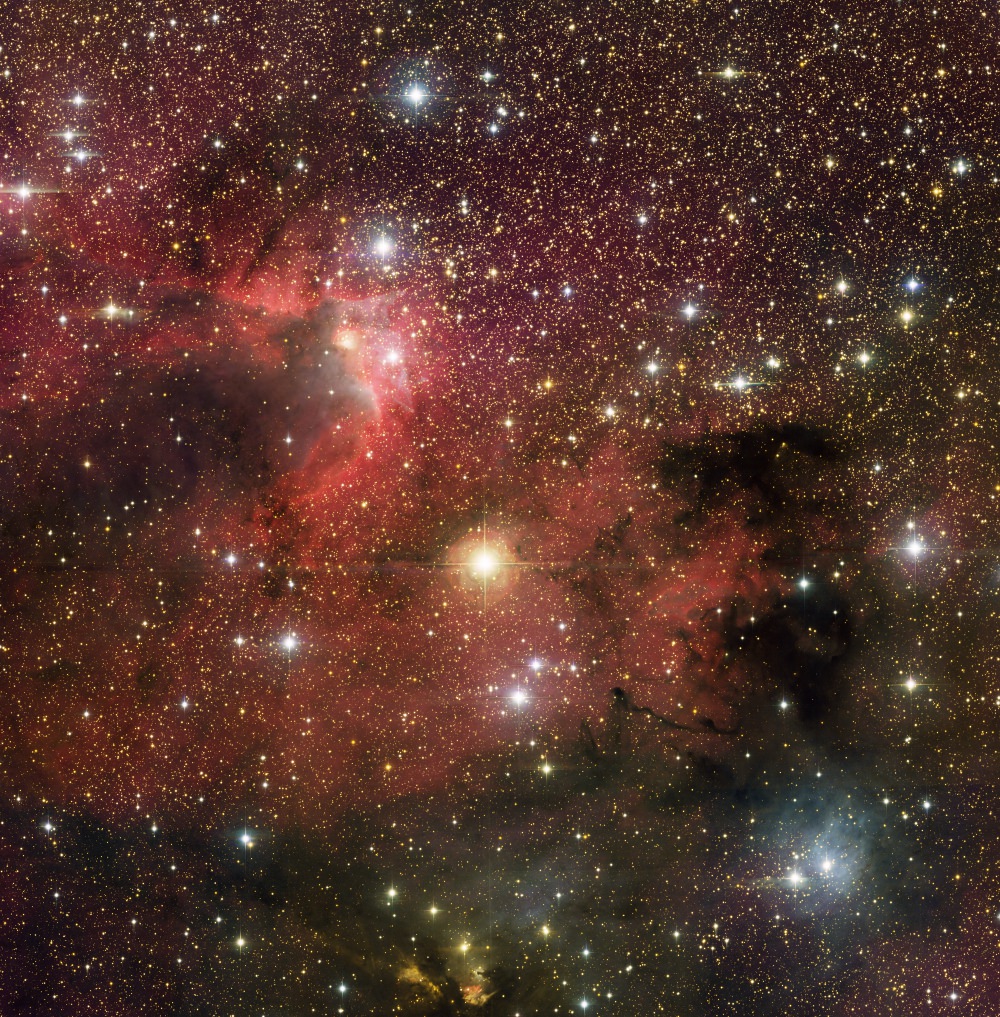It takes time to understand the life of stars. A star like our Sun takes tens of millions of years to form, and so much like archeologists who reconstruct ancient cities from shards of debris strewn over time, astronomers must reconstruct the birth process of stars indirectly, by observing stars in different stages of the process and inferring the changes that take place.
One of the best places to study the lives of stars is in star clusters. These regions that are rich with young stars provide astronomers much information that is relevant to the study of stars in general, but within a cluster, stars can form during a wide range of time, as a new study of the star cluster named Cep OB3b has shown.
“By studying nearby massive young clusters like Cep OB3b, we can gain a greater understanding of the environments out of which planets form,” said Thomas Allen from the University of Toledo, who is one of the authors of the new paper.
Located in the northern constellation of Cepheus, CepOB3b is similar in some ways to the famous cluster found in the Orion Nebula. But unlike the Orion Nebula, there is relatively little dust and gas obscuring our view of Cep OB3b. Its massive, hot stars have blown out cavities in the gaseous cloud with their intense ultraviolet radiation which mercilessly destroys everything in its path. Cep OB3b may show us what the Orion Nebular Cluster will look like in the future.
Allen and an international team of astronomers have found that the total number of young stars in the cluster is as high as 3,000. Infrared observations of the stars from the NASA Spitzer satellite show about 1,000 stars that are surrounded by disks of gas and dust from which solar systems may form. As the stars age, the disks disappear as the dust and gas get converted into planets or are dispersed into space.
But these observations pointed to a new mystery. Although the stars in Cep OB3b are thought to be about three million years old, in some parts of the cluster most of the stars had lost their disks, suggesting that the stars in those parts were older. This suggests that the cluster is surrounded by older stars, potential relics of previous clusters that have since expanded and dispersed.
To search for evidence for these relic clusters, Allen used the Mosaic camera on the 0.9 meter telescope at Kitt Peak National Observatory to observe wide field images of CepOB3b. These images show hot gas and its interaction with the stars and permit the team to study a curious cavity in the gas for evidence of older, yet still juvenile, stars that have lost their disks of gas and dust.
With these data, the team is searching for the previous generations of star formation in the region surrounding Cep OB3b, and piecing together the history of star formation in this magnificent region. When finished, this may provide clues how previous generations may have influenced the current generation of stars and planets forming in Cep OB3b.
Source:NOAO


I love this article How to Reconstruct the Life of a Star?
Alaska Salmon Fishing
tinyurl.com/cnaff79.
If your trying to advertise, sell, etc’s in here, We ain’t buying. At least I’m not. Look, its a free country & it’s nothing personal ok. But no thanks.
Are You
sure that this cluster of stars younger on the center and bit older on the
periphery, are You sure that this is not a mini galaxy? Because if it is so we
can apply the theory: USM kanevuniverse.com
The birth of star is very simple and interesting. All stars are interrelated. If you want to know the birth of star, you may read my book Complete Unified Theory ( page- 424, 1998).
Nirmalendu Das.
Dated: 03-04-2013.
Email: [email protected]